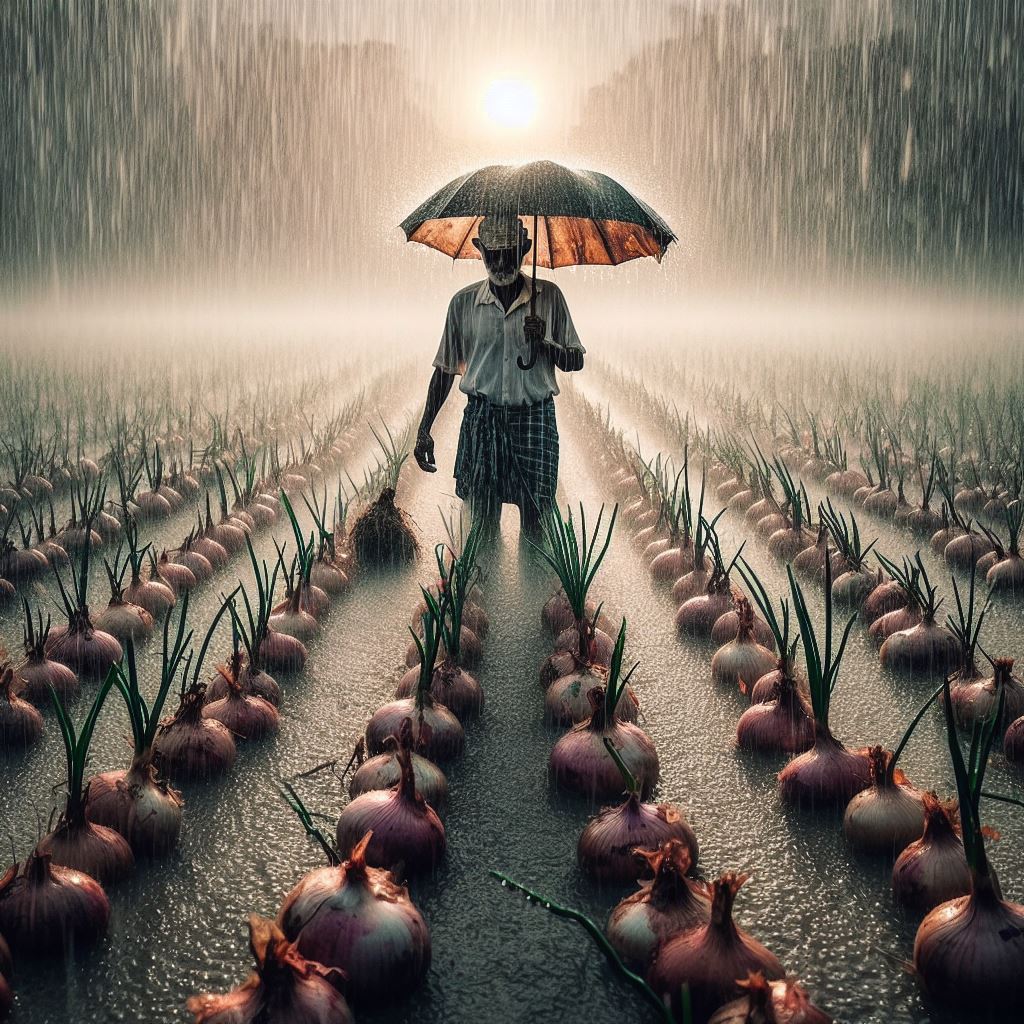A Handbook for Healthy Onion Harvesting during the Wet Season
Across the globe, onions are a common culinary staple, lending a strong flavor to a wide variety of recipes. Even though they enjoy a decent watering, prolonged rainfall during the growing season can be very problematic. But brave farmers, do not be afraid! Even when the sky opens up, you can still grow a bountiful harvest of onions if you use the right strategies and planning.
Setting Up the Front Line: Drainage is Key
Making sure there is enough drainage is the first line of defense against heavy rain. Raised beds are your greatest friend if you live in a location that floods easily or have heavy clay soils. By raising the planting spaces, you may let extra water run off the roots and avoid the dreaded root rot.
Picking Your Champions: Choosing Types That Can Withstand Rain
Regarding how well they withstand rainy weather, onions differ from one another. It is important to use short-season, rain-tolerant cultivars when planting during the rainy season. Because these onions mature quickly, there is less chance of rot and fungal illnesses because they will be ready for harvest before the worst of the rains hit. Rain-resistant cultivars that are in demand include “Rijnsburger,” “Red Candy Apple,” and “Bombay Red.” Seek advice from a trustworthy seed source or your local agricultural extension office regarding recommendations tailored to the climate in your area.
Air Circulation Spacing: A Breath of Fresh Air
Onions require plenty of moisture, but they also require airflow around their leaves and bulbs. Because of the sluggish atmosphere that overcrowding produces, fungi can thrive there. Carefully consider the planting strategy and adhere to suggested
Fighting the Green Invaders with Weeding Warriors
A lot of rain frequently makes the perfect environment for weed growth. These unwelcome visitors impede the growth of your onions by competing with them for nutrients and water. Throughout the growing season, regular weeding is crucial. The best way to remove weeds is by hand, especially while the onions are still little and just starting to grow. When the plants get bigger, you might want to use a scuffle hoe or shallow hoe to get rid of the weeds in between the rows without ruining your priceless onion bulbs.
Fungus Among Us: Preventing Disease in Your Crop
The rainy season’s persistent dampness might raise the danger of fungal infections including anthracnose and downy mildew. These illnesses can damage the bulbs and leaves, lowering crop quality and yields overall. To oppose
Gathering Fruits: Enjoying the Benefits Before the Rains
It is important to pay special attention to your onions during the wet season. Bulbs may soften more quickly in wet soil conditions, increasing their vulnerability to rot. Don’t wait to harvest your onions once they are mature, as indicated by dried tops and full bulb formation! They are less vulnerable to additional rain damage the sooner you remove them from the ground.
Bonus Advice: Mulching to Control Weeds and Retain Moisture
During the rainy season, mulching your onion plants with a thin layer of organic material can be quite helpful. Mulch encourages healthy soil structure and helps the soil hold onto moisture during dry spells. It also aids in inhibiting weed development, which lessens the requirement

